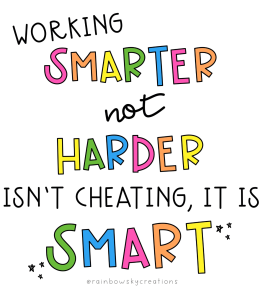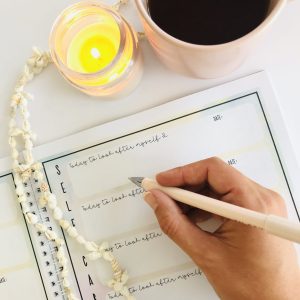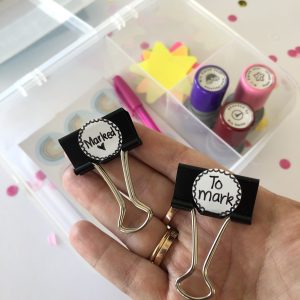Written in collaboration with Guest Blogger Emma Yentis
We have all heard of the term ‘burnout’ but what does it actually mean and how can we tell if we are experiencing teacher burnout?
Teacher burnout refers to being emotionally and physically exhausted. You may feel overwhelmed, drained and generally worn out. It can sometimes feel like you can’t cope and things are just too much. It might be starting to affect other parts of your life too.
I’ve been there. I experienced teacher burnout in my role as a teacher and part of the Senior Leadership Team. It took a lot of work to bounce back but I am now in a position with the capacity, to support others in doing the same.
Here are some top tips to avoid teacher burnout and prevent symptoms from worsening. These are things that all worked for me so I hope they work for you too!
10 Uplifting Strategies to Prevent Teacher Burnout
1. Recognise the signs
You might be tired, but are you feeling exhausted all the time? Are you consistently feeling overly emotional, crying a lot and feeling flat? Start tracking your moods and how often you are feeling emotional.
If it is a one-off that you feel extra tired then that is manageable, but if you are feeling exhausted every single day and becoming emotional and sensitive a lot of the time, something needs to change.
2. Talk to leadership and be transparent about how you are feeling
The best thing you can do if you are feeling overwhelmed and stressed at work, is tell someone in leadership that can help guide you. They will only want what’s best for their staff and ultimately, the students, so opening up this dialogue will allow them to help.
If you don’t ask, you don’t get!
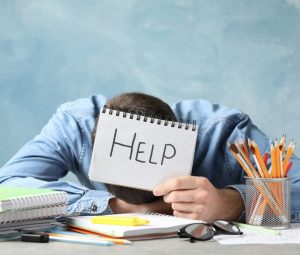
3. Exercise, food & health
Help prevent or get a handle of teacher burnout by making sure you are eating a balanced diet and try to limit yourself to only 1 or 2 coffees a day.
Get outside for a walk at lunchtime, even if it is 10 minutes. I know that seems ridiculous as you have a mountain of work to do, but those 10 minutes can clear your head, and prevent headaches as well as longer potential teacher burnout symptoms. It’s about getting into a routine and allowing yourself some time.
Make time for your exercise. This should be a priority for your physical and mental well-being. Try putting exercise into your timetable/routine and hold yourself accountable. If you say you will, then do it – your work can wait!
4. Delegate work
You probably feel that there is just too much to do and not enough time, right? That probably is the case…
Being a teacher means there is just a never-ending to-do list and not enough hours in the day. By delegating your work with the people in your team, you are being authentic with them by letting them know you have a lot on, but you are also giving them responsibility. It works both ways!
Sometimes, we just have to let go of our own standards and expectations that everything has to be done our way because there just isn’t always time!
Decide what things you can and can’t delegate, and do it – this might mean changing up classroom routines so your students are contributing more.
5. Find gratitude
It’s so difficult to find the positives in a day that seems so hectic and stressful but it is so important to recognise the things you are grateful for or the things that have gone well for you that day.
Write down 1-3 things EVERY DAY that you are grateful for. This allows us to put aside the challenges and focus on the successes. It is also an opportunity to be grateful for the smaller things in our day-to-day lives.
“Over the years I have used a gratitude journal to help me cope with the feelings of teacher burnout. I have even got my students involved and started the school day with everyone sitting down and recording a few things they are grateful for. I find it helps” Ashleigh, Rainbow Sky Creations.
6. Prioritise sleep
We all know that when we are lying in bed trying to sleep, we do our best lesson planning, seating arrangements and meeting preparation! But you cannot be the best teacher you are capable of being if you are sleep-deprived.
So how can we make sure to get a proper night’s sleep? Try no screen within 30 minutes of going to bed and instead, you can read a book, listen to a podcast or use this time to write down your gratitude/’what went well today’ list.
If you need to get to work 10/15 minutes later, then do. The school will not burn down because you are not there at the crack of dawn! Set your alarm for 10/15 minutes later and don’t feel guilty about it!
7. Be strict with your boundaries
We all know that part of the teaching job means taking home books to mark, writing reports in the half term and finishing lesson plans in the evenings.
You need to find a limit and boundaries that are appropriate to you which means you are not taking work home every day.
Allow yourself one evening a week where it is okay to work at home if you have to. This is a really good place to start to prevent teacher burnout.
8. Break up your workload
It can be quite daunting to stare at the never-ending pile of work and books to mark. So break it up. i.e. I’ll mark 20 books before I leave at 6pm and the other 10 will just have to wait for the morning. And if I don’t get them all marked by the time the children come, then that is OKAY.
If you don’t get every single bookmarked by the end of the school day, what is the worst that’s going to happen?
The same theory can apply when writing reports – break up writing comments into small groups.
9. Allow time for yourself
What do you like to do? What brings you joy and happiness? Allow yourself time to do these things. Make time in your day or week to do something that you need for yourself where you can step away from work and stress.
We mustn’t let our job define us and take away our pleasures.
Learn about some teacher wellbeing strategies here.
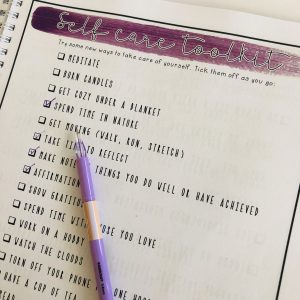
10. Stop feeling guilty all the time
Something about teachers is that we carry guilt all the time. If we are ill, we feel guilty about not going in, so more often than not, we go in even when we are unwell!
We need to stop feeling guilty about leaving our class when we are sick, resources not being in the most pristine condition and books not being marked in lots of detail.
We are human. We cannot do everything at 100% because it is not possible. You shouldn’t feel guilty for that. You can only do the best you can do.
My final piece of advice to help prevent teacher burnout is to let yourself find LOVE in what you do.
You are someone’s favourite teacher.
You enthuse, engage and educate so many people.
Recognise the joy you get from teaching your students and remember that because of you, someone has learnt something new!
About today’s guest blogger Emma Yentis:
Emma is a fellow primary school teacher with a decade of experience. She was Head of Key Stage 1 and head of PSHE. Emma too suffered from burnout and received leadership coaching which helped her cope. As she stepped away from the classroom, Emma knew she wanted to support teachers in the same way that her coach helped her.
Emma has a Diploma in Transformative Life Coaching and offers my PSHE expertise by writing blog posts and delivering webinars. Emma also works with a charity where she goes into many schools across London, encouraging young people to engage in charity work and social action. Connect with Emma on Instagram here.
What to read next:
5 Teacher Well-being Strategies
Ways to limit staff meeting fatigue
7 Awesome Kmart Hacks for Teachers



